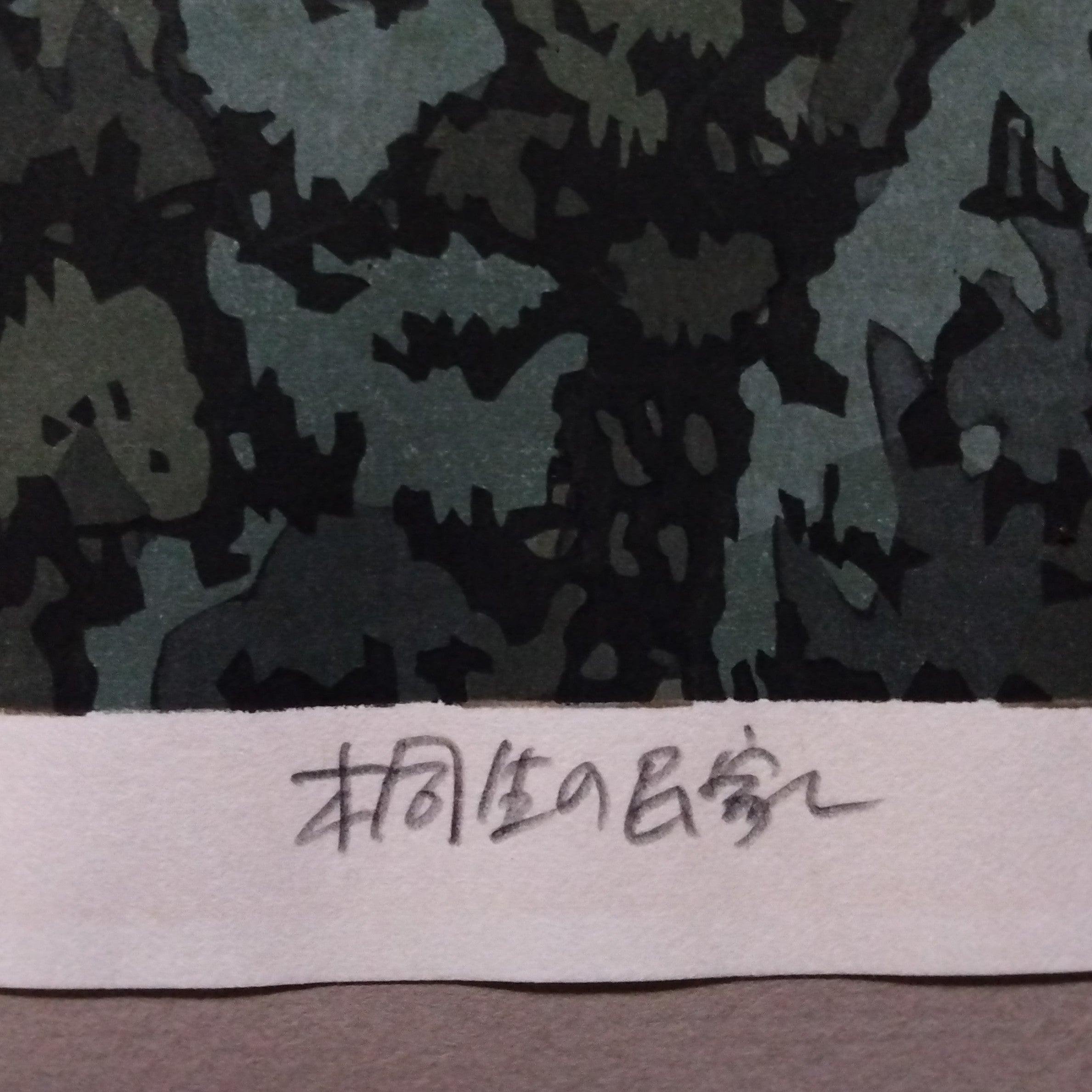Description
Woodblock Print by Katsuyuki Nishijima, "Folk House in Kiryuu" (Kiryuu no Minka). Limited edition print, #414 of 500. Features artist's signature and red seal. Ca. 1980's. Horizontal format; H. 11"(28cm) X W. 15.75"(40cm). Excellent condition. *Fully matted, framed, & delivered option may be available for local purchasers (I-5 corridor from Seattle to Blaine, WA). Please contact for details.
The image is of homes in Kiryuu city, in southeast Gunma Prefecture. This is about 100 km (60 miles) northwest of Tokyo, near the border of Tochigi Prefecture. Kiryuu has been a center of sericulture and silk fabric production since the 8th Century, and many buildings related to the industry from the 1800's & early 1900's are still preserved there. The "Minka" (Folk House) referred to in the title is at the rear of the image, with a large thatched roof. As Kiryuu is at the foot of Mount Akagi, these homes have been named "Akagi-style" Folk Houses. The large upper floor was the designated workspace for raising silkworms and the thatched roof and small upper floor windows provided the ideal ventilation and climate for sericulture. The first floor was the farmers' living space. In the far background of the image are probably cedar trees, for which the region is also well-known.
Katsuyuki Nishijima, 1945 – present.
Katsuyuki Nishijima was born in Yamaguchi Prefecture at the southwest end of the main island of Honshu. At the age of 19, he started studying the art of woodblock printing making at the Mikumo Publishing Company in Kyoto. By the early 1970’s, he was beginning his career as a Sosaku Hanga (Creative Print) artist. As opposed to traditional woodblock prints of the 19th Century and earlier that were created by a team of artisans composed of designers, carvers, colorists, printers, and publishers; the Sosaku Hanga movement of the 20th Century highlighted the work of artists who self-drew, self-carved, and self-printed their own expressive works. Nishijima is a very popular contemporary Kyoto print artist and his works have been collected and exhibited widely in Japan, the US, and Europe.
Nishijima’s works could be called “romantic” in that there is something idealized and old-fashioned about his images. They rarely contain people; or modern elements such as cars, telephone wires, or even the ubiquitous Japanese trains. They focus on architectural elements such as tiled and thatched rooftops, verandas, noren shop curtains, the wooden latticework in front of Kyoto machiya buildings, stone walls, as well as Japanese rural landscapes. While these could be considered romantic and detached from reality, these elements still exist in modern-day Japan and are what visitors are drawn to and remember in places like Kyoto, Shigaraki, Takayama, and the like. One could say that instead of romanticizing Japanese scenery, he’s actually bringing out the essence of what is beautiful and important in humanity’s view of traditional Japan.







